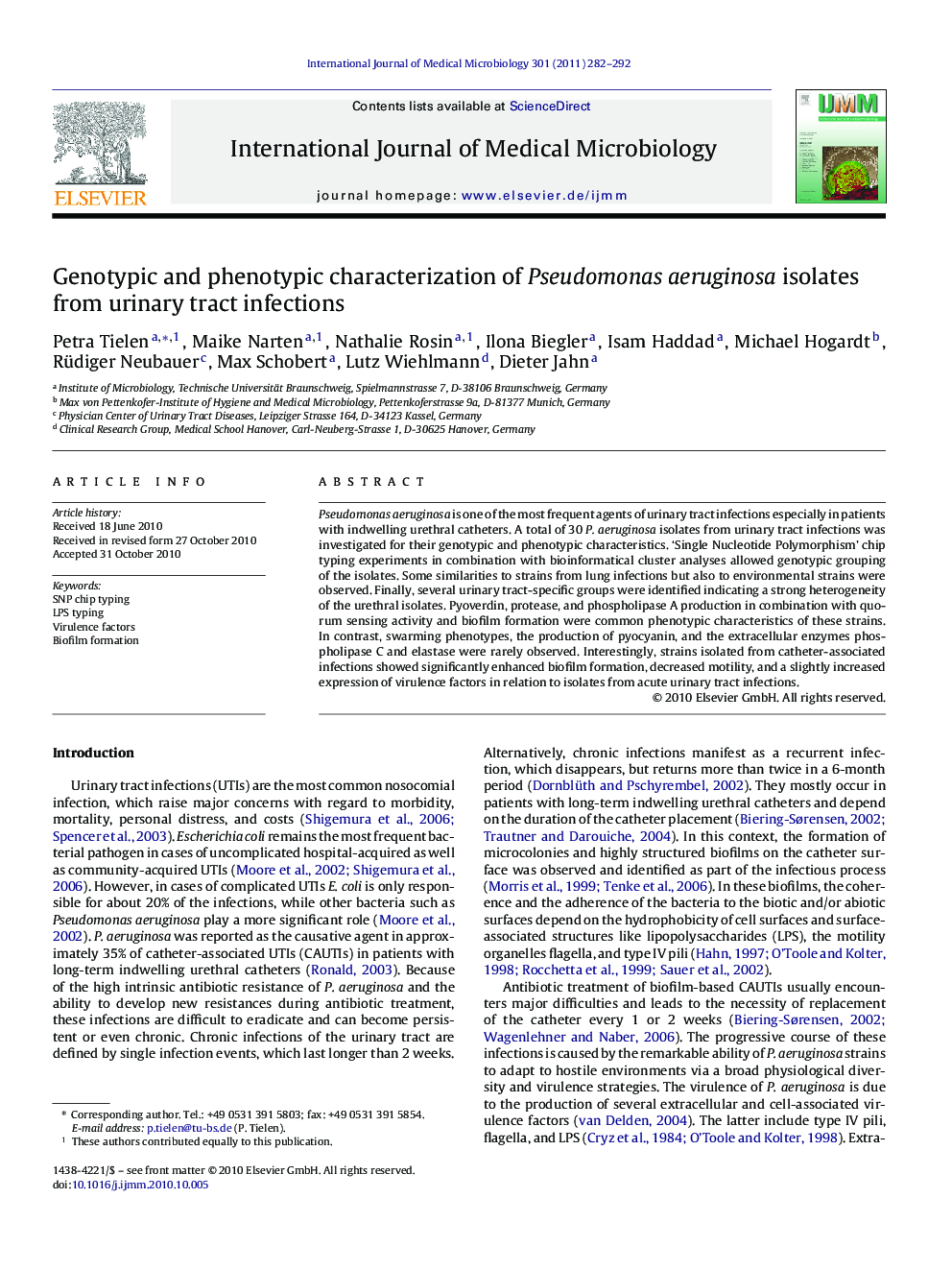| Article ID | Journal | Published Year | Pages | File Type |
|---|---|---|---|---|
| 8386033 | International Journal of Medical Microbiology | 2011 | 11 Pages |
Abstract
Pseudomonas aeruginosa is one of the most frequent agents of urinary tract infections especially in patients with indwelling urethral catheters. A total of 30 P. aeruginosa isolates from urinary tract infections was investigated for their genotypic and phenotypic characteristics. 'Single Nucleotide Polymorphism' chip typing experiments in combination with bioinformatical cluster analyses allowed genotypic grouping of the isolates. Some similarities to strains from lung infections but also to environmental strains were observed. Finally, several urinary tract-specific groups were identified indicating a strong heterogeneity of the urethral isolates. Pyoverdin, protease, and phospholipase A production in combination with quorum sensing activity and biofilm formation were common phenotypic characteristics of these strains. In contrast, swarming phenotypes, the production of pyocyanin, and the extracellular enzymes phospholipase C and elastase were rarely observed. Interestingly, strains isolated from catheter-associated infections showed significantly enhanced biofilm formation, decreased motility, and a slightly increased expression of virulence factors in relation to isolates from acute urinary tract infections.
Keywords
Related Topics
Life Sciences
Biochemistry, Genetics and Molecular Biology
Biochemistry, Genetics and Molecular Biology (General)
Authors
Petra Tielen, Maike Narten, Nathalie Rosin, Ilona Biegler, Isam Haddad, Michael Hogardt, Rüdiger Neubauer, Max Schobert, Lutz Wiehlmann, Dieter Jahn,
